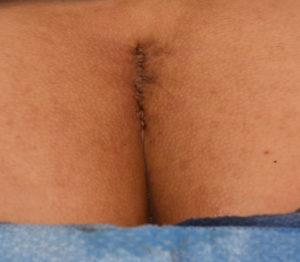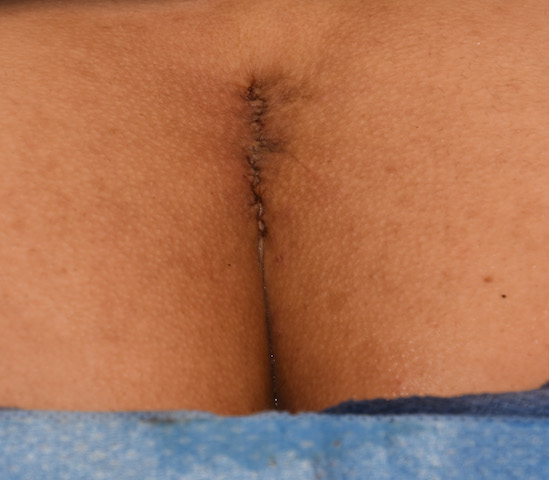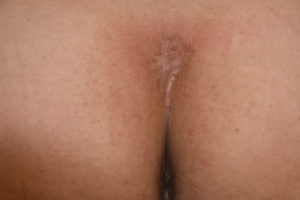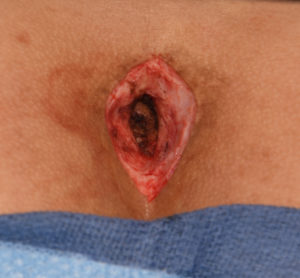The intergluteal incision is the most commonly used approach for the placement of buttock implants. As long as the incision does not extend up higher than the most vertical level of the buttock cleft it remains well hidden.
While the intergluteal incision is not vertically excessive (usually no longer than 7 cms) it is in a unique anatomic location. Placed between the two buttocks it is exposed to a lot of sheering stress across it from being sat on as well as slide across it. This is the reason that the most common postoperative complication from buttock implant surgery is some amount of partial wound dehiscence/separation. This will always go on to heal on its own but will do so with some scar widening.
Another anatomic issue that can placed stress on the intergluteal incision is what lies underneath. If a prominent coccyx exists this can also undue compression on the incisional closure between it and any external shearing forces. This can easily be missed before surgery bit can be more obvious during surgery. This is not the ideal time to do an impromptu coccygeal reduction.

If a prominent coccyx is observed before buttock implant surgery, its concurrent reduction can be done along with implant placement. This will add to the postoperative discomfort somewhat but will be one less adverse element to the intergluteal incision healing.
Dr. Barry Eppley
Indianapolis, Indianapolis





